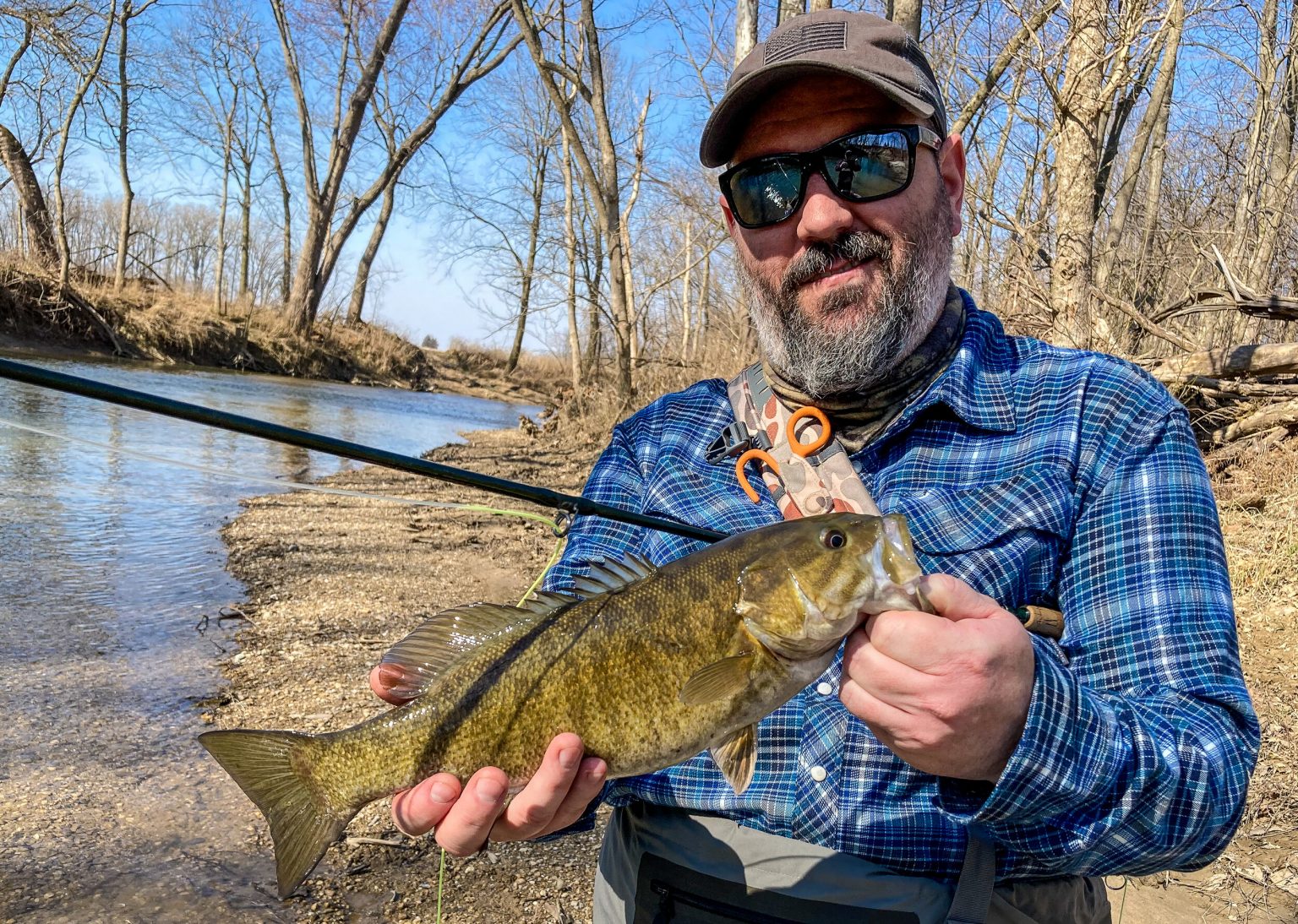Tactics
National Deer Association’s 5 Top Tips for Late-Season Deer Hunting
December 17, 2025 •iSportsman Staff
May 20, 2022
April and May offer some of the best smallmouth bass fishing of the year but it also offers some of the most contrasting fishing conditions of the season.
One day might be perfect, with nice water and great weather, while the next day might bring muddy high water, thunderstorms and sometimes snow. This means that even more than lake anglers, springtime river bass fishermen must stay adaptable to the changing conditions.
Though not a popular lake fish in Indiana, smallmouth (and largemouth) bass will bite slowly but steadily year-round in standing water. This is not the case in streams. The most popular theory is that river bass need to conserve energy when the water is cold while lake fish, who don’t have to contend with current stress, are free to sit around and eat when the mood and opportunity strikes them. This means that water temperature is critical to stream smallmouth fishermen.

As streams finally begin to warm up sometime in March, bass finally begin to wake up from their near-hibernation and chase food. While there are no hard and fast rules, when the stream approaches 50 degrees, the bass will become active. The problem for the angler is determining where exactly to fish.
While the main stream flow at your local creek might be 40 degrees, a shallow backwater area might quickly warm to 60 or above on a sunny day. Thus, in early spring, the most critical factor is to seek out the warmer areas and those fish that are feeding in the equivalent of a bass hot-tub.
This also means that the best fishing is often in the late afternoon when the water is at its warmest. Given the choice, fishing a small creek early in the season is a better bet over a larger river for the same reason.
Once we reach mid-April and certainly by May, water temperatures are generally above the threshold for bass feeding and the problem becomes one of dealing with weather and water conditions.
Generally speaking, a period of stable, relatively warm weather will cause the fish to go on a feeding binge. In fact, if you can fish immediately prior to a big cold front passing through the area after several days of great weather, the fishing is often incredible as a feeding frenzy is unleashed before things change.
The fishing challenge comes after the weather changes. Winds usually shift to the east, the temperature often drops 20 degrees or more, the water is often muddy and the fish go into a sulk.
Whenever it gets colder, the key is to downsize both size of the lure/bait and speed of retrieve. Bass can often be triggered to strike but try to imagine they are sitting in their favorite chair after a big meal: it takes an overwhelming temptation to get the fish to move even a few inches.
Sometimes it is nearly impossible, making patience and perseverance the keys. Ultimately, you’ll probably catch fish but don’t expect a banner day. By mid-May, the problem isn’t so much a temperature drop but high and muddy water after passing thunderstorms fill local drains. Depending on water flow, it could help things or might make the stream too dangerous to fish.
When the water is warm, a slight rise in water level coupled with murky stained water often sets off a feeding frenzy. During these times, a brightly-colored lure cast into stony riffles will often pick up all sizes of bass as they sit in the middle of the flow picking up food that has been swept into the current. During these times, the normally structure-oriented fish behave like trout, often feeding right in the middle of the stream.
As water continues to rise and become muddier, the fishing is increasingly tough. Look for current breaks such as large rocks, stream mouths, islands and other places where the current slacks. Using a brightly-colored, noisy lure such as a firetiger (a chartreuse and green tiger-striped paint scheme) crankbait is usually critical to attracting attention of the bass in their opaque world.
Live bait often comes into it’s own at this time as you can position your offering in slack water and wait for a bass to ambush it. A favorite rig is a minnow on a circle hook (to allow catch-and-release) with just enough weight to keep it in place. Nightcrawlers also work well in these circumstances.
Once the stream is completely blown out for fishing by flooding, it will take several days for feeding to resume after the water recedes. During this period, there isn’t much to do except head for a nearby pond and bide your time until the scrappy smallmouth is back on the prowl.
